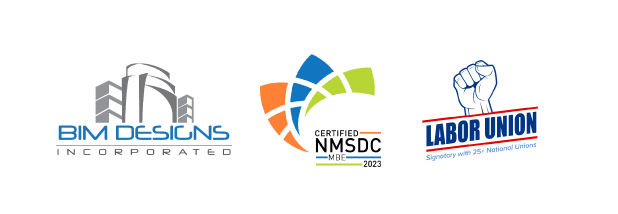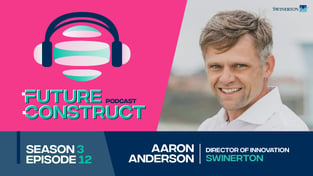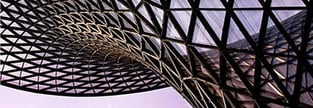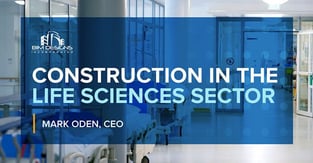
The Benefits of Virtual Design and Construction (VDC) for the Construction Industry
You have to pity the designers and architects of only a couple of decades ago who had to build all manner of construction with only architectural drawings and 2D artworks. Not decrying the work of draftsmen in producing elegant contract drawings, the process of translating two-dimensional line works into a three-dimensional atmosphere takes a special mind. This process was made easier when CAD gave us the option of creating accurate and lifelike models in computer programs which allowed us to carry out a virtual walk through of the finished property. Other aspects of the industry and BIM benefits can be READ HERE.
Suddenly, architects could take a client on a detailed tour of their prospective new property, which alone, made virtual design and construction (VDC) a highly useful part of building design. There are a number of benefits of VDC, some of which are less apparent than others, but all of which are important in ensuring that what is built is correct and not only meets the client’s specifications but other criteria to include:
· Energy efficiency. Highly detailed building models are far more than a simple three-dimensional representation of what is intended to be built. Rather, they can be thought of as a complex mathematical structure which can be used to obtain in-depth analysis. One of the most fundamental uses of this kind of model is in the assessment of its energy efficiency and its impact during the design and building phase. In order to carry out an evaluation of a buildings potential the myriad services used – including materials, facilities and equipment, – need to be included to establish the impact of the measured efficiency in the completed building.
But energy efficiency can go further than that, and the overall BIM project can consider the systems that are installed in the building as well as appliances that are to be used by the buildings occupants. The former can include lighting systems, elevator equipment, water apparatus, and electrical services, while the latter may comprise systems introduced by the buildings occupants. These can include cooking and refrigeration systems and other electrical items that they may introduce if the building is for domestic use, or industrial and computer systems if the building is for industrial or commercial use. Since the use of the building will be known during the design phase, a great deal of information about what equipment will be installed can be applied.
· Cost effectiveness. The theory that if something can be measured it can be quantified works with the concept of VDC, and feeds into the overall building information modelling (BIM) package which can be used to determine the overall cost-effectiveness of a construction project. Plainly, cost effectiveness is closely related to materials – with expensive or hard to obtain materials obviously increasing costs significantly – and labor usage. If cost effectiveness is planned during the initial design stages then we can take account of materials used, build sequence, and the best use of specialist equipment
· Safety issues. With any construction, the safety of both workers engaged on the construction of the project and those who will ultimately use it must always be considered. As such, any potential issues that may impact their safety can be identified and highlighted via the VDC model. This will remove any unexpected and unsafe scenarios that can arise. However, to be able to effectively do this, the designer, architect, and detailer must be able to envision hazards that can occur, bearing in mind that these can vary considerably with each project. This means that all parties involved in the project need to be able to envision what hazards could become apparent and be able to either negate them or apply guards against them. Since VDC can be used to create models of extremely high detail rather than just block-like representations of features, real assessments of potential safety issues can be made in the modelling phase, ensuring that those working on or using the building never have to encounter potentially dangerous situations.
· Build sequence. In a reflection of energy efficiency, the investment in a building project can be maximized by reducing build time to the minimum. To be able to accomplish that, a construction must be built in the fastest and most efficient manner. VDC can be used as a tool to determine the most effective method of constructing the project, making best use of resources and reducing time. Considering the build sequence early in the design phase can ensure that the project is run in the most cost-effective manner. This implies that at each stage of the build all materials required and the professionals needed to install them are on site, thus reducing costs. In addition, build sequence can be used to plan complex structures which may need to be constructed in a specific order to fit in certain elements.
· Future-proofing. Retrospectively fitting services and devices to buildings is enormously expensive. Before any work can be carried out a building engineer or architect will need to assess the extent of work and decide on what changes will need to be completed to remodel the building. Once approval has been granted, the actual work will need to be done and that can be disruptive to building residents and those in the surrounding area.
By using VDC, a good deal of future proofing can be built into the structure during the initial construction dramatically cutting down on any further work that may need to be undertaken in the future. Future proofing may be as simple as ensuring that services such as gas lines and conduit can be expanded, or perhaps may consider the possibility of fiber-optic technology and install these low-cost lines ahead of time, ready for connection when needed.
Aside from technology, future-proofing may consider other factors that may become important, including:
o Flexibility. A buildings use may change, requiring modification to its internal spaces and resources. If this factor is designed in the beginning of the build,it will allow for an easier transition.
o Climate change issues. Initial VDC could implement the ability to change external panels quickly or allow additions which could be used as flood defenses.
o Legislation. Future lawmakers may require buildings to supply a certain percentage of the energy used through renewable means. This may include the ability to fit solar panels or have space for potential wiring of batteries. Similarly, the aerodynamics of the building could be designed to funnel airflow to maximize the work done by wind turbines.
o Social attitudes. Buildings may need the ability to fit in with their surroundings or swap from a paneled exterior to glass walls, or vice versa. By planning the easy and relatively fast replacement of such panels, the exterior of a building could change to meet local expectations. This could also be extended to interior features which could be designed to reflect different living or work practices by swift modification of partitioning and the swapping out of services.
In a process that started with just just wood and nails, then reached beyond the usual construction basics of bricks and mortar, the construction industry has come a long way. It now considers the who, what, and why a building is to be constructed and takes on full engineering innovation. Much of this is driven by market forces, the need to make buildings that will stand the test of time, and current construction costs The architect must consider legislative issues, future proofing, and safety issues and only a powerful tool such as VDC can bring all of these elements together.
An increasing number of domestic and commercial properties are now being designed and planned with VDC. This will result in buildings being cheaper to construct and more efficient in use thanks to improved designs and the use of smart materials. If you enjoyed reading this content we have plenty more on the subject of Building Information Modeling.

About the Author
Mark, CEO, joined the BIM Designs team with over 10 years of experience working with Silicon Valley tech companies in product management, business development, mergers and acquisitions, and CxO roles. Mark leads the growth, strategy and execution of the company; his acute ability to develop and implement strategic processes that scale the company's capabilities drives efficient service delivery, increases client satisfaction, and builds cross-functional teams.





